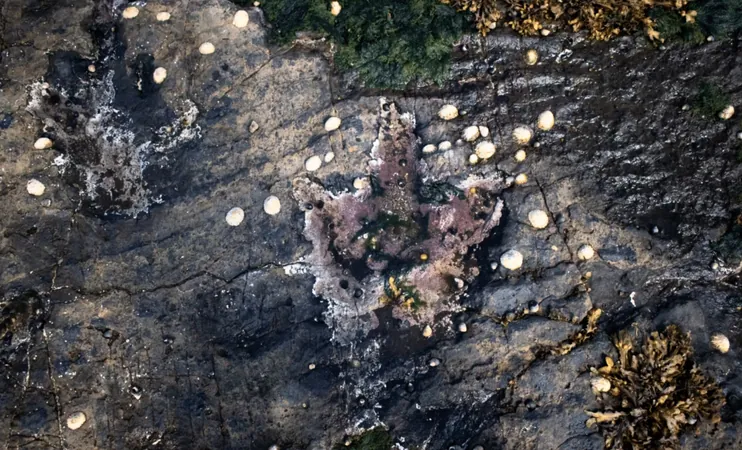
Incredible Dinosaur Footprints Discovered in Scotland: A Jurassic Treasure Awaits!
2025-04-11
Author: William
Exploring a 167-Million-Year-Old Find
A breathtaking paleo-discovery has surfaced on Scotland's Isle of Skye—a treasure trove of dinosaur footprints that offers an extraordinary glimpse into the Middle Jurassic era, a time often shrouded in mystery due to limited fossil records. Situated at Prince Charles’s Point, these ancient tracks reveal how dinosaurs once roamed a lush, subtropical lagoon over 167 million years ago.
A Lost Lagoon Unveiled
This remarkable site boasts 131 dinosaur tracks, meticulously preserved in sandstone layers from the Kilmaluag Formation, dating back to the Late Bathonian stage. These sedimentary beds, part of a former lagoonal system fed by freshwater rivers, now lie exposed along the stunning northwest coast of Skye’s Trotternish Peninsula.
Researchers have pieced together a vivid image of this prehistoric environment. The lagoon teemed with flora like towering conifers, giant ferns, and ginkgos, alongside microfossils and terrestrial pollen that paint a picture of a vibrant ecosystem. Curiously absent were marine signs, reinforcing the idea of a clear freshwater habitat.
Unexpected Predators on the Prowl
What truly sets this discovery apart is the rich abundance of theropod tracks—predator prints that outnumber those of the massive herbivores, or sauropods, challenging the typical patterns found in similar geological settings. The footprints reveal two main types: hefty megalosaurid theropods and early sauropods.
One standout find shows a theropod footprint overlapping a sauropod track, hinting at a thrilling encounter between predator and prey. As paleontologist Stephen Brusatte from the University of Edinburgh explained, "These rare footprints offer invaluable insights into ancient behaviors." The details are astounding: theropod tracks stretch up to 53 cm long, showcasing distinct three-toed impressions, while the sauropod tracks reach 50 cm wide, reflecting the massive size of dinosaurs like Cetiosaurus.
Chronicles of Movement Across Time
The site reveals complex patterns of movement, with footprints laid down over different timeframes. In one section alone, a cluster of 17 theropod and 23 sauropod tracks provides a rich narrative of life across the ages. Some footprints were found layered atop others, indicating that these dinosaurs traversed the same paths in quick succession, a behavior researchers term "time-averaged milling."
Stride lengths suggest moderate walking speeds, with lengths between 2.3 to 3 meters, and analyses of their movement patterns indicate they weren't confined to single paths but roamed freely across diverse terrains.
Cutting-Edge Technology Brings the Past to Life
To capture the astonishing details of this site, researchers employed state-of-the-art drones equipped with high-resolution cameras, generating over 4,500 overlapping images. These were transformed into detailed 3D models and digital maps, ensuring every footprint was accurately documented and analyzed.
Such technological advancements allowed researchers to distinguish various track morphotypes, providing a precise framework for comparison with global ichnotaxa. Graduate student Tone Blakesley emphasized, "The tracks reveal so much about dinosaur behavior and interactions that fossilized bones alone can't convey."









 Brasil (PT)
Brasil (PT)
 Canada (EN)
Canada (EN)
 Chile (ES)
Chile (ES)
 Česko (CS)
Česko (CS)
 대한민국 (KO)
대한민국 (KO)
 España (ES)
España (ES)
 France (FR)
France (FR)
 Hong Kong (EN)
Hong Kong (EN)
 Italia (IT)
Italia (IT)
 日本 (JA)
日本 (JA)
 Magyarország (HU)
Magyarország (HU)
 Norge (NO)
Norge (NO)
 Polska (PL)
Polska (PL)
 Schweiz (DE)
Schweiz (DE)
 Singapore (EN)
Singapore (EN)
 Sverige (SV)
Sverige (SV)
 Suomi (FI)
Suomi (FI)
 Türkiye (TR)
Türkiye (TR)
 الإمارات العربية المتحدة (AR)
الإمارات العربية المتحدة (AR)